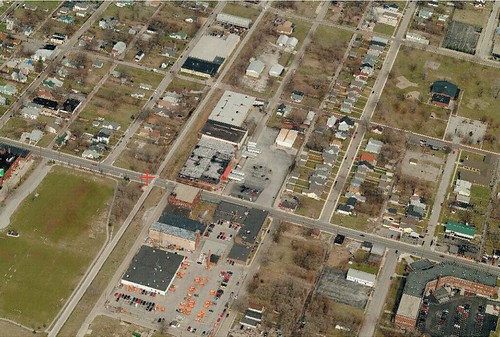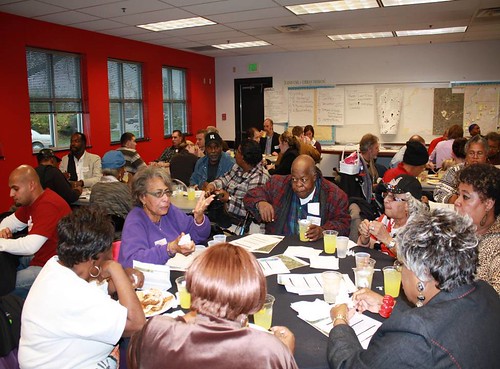An Indy neighborhood could become a model of smart, green revitalization – so where are the enviros?

Posted November 2, 2009 at 1:31PM
Last week I had the honor of being one of seven smart growth types recruited by the American Institute of Architects to work with the city of Indianapolis and community residents on the model revitalization of a distressed urban neighborhood. Really a composite of two neighborhoods divided by an old rail corridor, the city's Smart Growth Renewal District has experienced serious depopulation and industrial contamination (some 30 to 70 brownfields, depending on which report you read) over the past several decades. But it also has assets: a resilient population with a lot of heart, beginning pockets of revitalization here and there, and a good location not far from downtown.
That location could get even better if a light rail line under consideration to run alongside a popular recreational trail in the old corridor is approved, bringing one or more stops to the district. But there is a long way to go, and the community appears to be justified in some skepticism given past planning exercises that have come and gone with little result.
I have to admit that the process for our group, one of nine Sustainable Design and Assessment Teams assembled by AIA to advise communities across the country this year, took me way, way out of my comfort zone. The premise that seven outsiders can descend on a place with little preparation, direction or structure ("This is the true story of seven strangers . . ." kept running through my head) and leave their local constituents a few days later with something of greater value than what residents and professionals with more time and resources can develop locally is a little presumptuous, to say the least. But I quickly came to care about the community - J.R., Geni, DaVinci, Josephine, Janine, and many, many others - and concluded that our greatest value might lie not in rushed recommendations for design or policy but in giving an endorsement to the community's own aspirations, to bolster their own efforts and advocacy. I hope we accomplished that.
I benefited tremendously from the experience, learning a ton about the dynamics of on-the-ground community development while forging new professional and personal relationships with an exceptionally able and pleasant group of fellow team members, plus two great AIA staff members. (The 14-hour days with no breaks were another matter, but a late-night pep talk from my wife after day two kept me on track.)
I plan to write a lot more about the project in future posts because this neighborhood, like those I have described in Atlanta (aspects of the abandoned rail line in Indy bear a strong resemblance to the Atlanta Beltline corridor), St. Louis, Cincinnati, and elsewhere, has great potential to become a model of inclusive, smart, green restoration. If you've read this blog before, chances are that you already know that I believe that thoughtful central-city redevelopment is the single best thing we can do for the environment. It is the antithesis of sprawl, the key to reducing carbon emissions, conserving the natural and working landscapes, improving fitness and public health, saving rural watersheds, and more. (Indianapolis, an extraordinarily sprawling and automobile-dependent city, especially needs the help; I'll write more about that in a future post.)
So why aren't my fellow environmentalists engaged in these discussions? We had over 200 people show up to our community meetings and speak with eloquence and passion. In the course of our time there, I met many local residents, city officials, politicians, developers, religious leaders, architects and planners, members of the press, and a large contingent of energetic faculty and students from Ball State University. But I didn't meet a single representative of an environmental organization.
And it's not just Indianapolis. With a few shining exceptions here and there such as the folks at the Center for Neighborhood Technology and my friend Tim Frank from the Sierra Club, this issue just doesn't resonate with the environmental community. My life sometimes seems like an endless series of conference calls and meetings and, if revitalizing cities is the subject, chances are that I'm the only environmental participant. Even within my own organization, my busy colleagues, preoccupied with policy abstractions, have an exceptionally short attention span when I raise the topic. Leadership on urban restoration currently lies almost totally outside the environmental world, and that's a shame.
More to follow.



